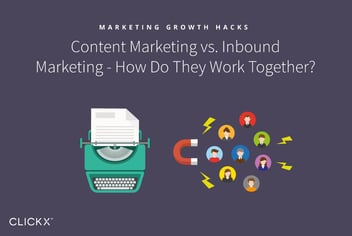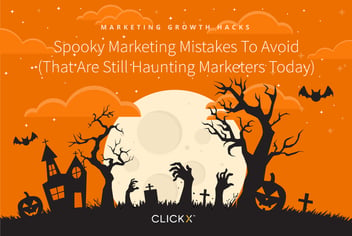The 7 Pillars of Marketing to See ROI on Your Marketing Investment

All business owners and managers can agree that marketing is a necessary cost of running a business, but it’s common for businesses to continuously funnel money into marketing activities without seeing a return on their investment. You may have a beautiful website and outstanding blog posts that position yourself as the expert in your industry – but if the marketing activities aren’t driving results for your business in terms of new leads and sales, your marketing dollars are simply wasted. The best way to get ROI on your marketing investment is to make sure your marketing activities are part of the 7 Pillars of Marketing:
Pillar 1: Branding
Ensuring your business brand messaging and business value proposition is clear is important to establishing strong brand promise. Your “brand” is what makes your business unique. It’s the name, symbol, or design that people recognize. The branding of a company is how your prospects and customers associate with your company, and what makes your product or service different from your competitors.
Define Your Brand
Establishing your brand is a lot like an exercise in self-discovery. It’s time consuming, slightly uncomfortable, and difficult for most of us. Consider the needs, desires, and habits of your current and prospective customers, and then answer the following questions to start defining your brand:
- What is the mission of your company?
- What are the benefits your products or services offer?
- What impression do people have of your company?
- What traits and characteristics do you want people to associate with your company?
Marissa Cooke, from Clickx.io, says Apple is doing an exceptional job with its branding, and we could all learn from their strategy:

The Apple logo is recognizable by virtually everyone. The message of simplicity and innovation is exemplified throughout every aspect of their company. The neutral colors and sharp lines used show simplicity. Simplicity is also shown through their easy-to-use technology as well. Their advertising shows their passion for innovation by visually showing the new and exciting types of things their products can do and how it helps with the progression of society. From Apple, one can learn that it is extremely important to be consistent in your business’s branding and to make sure everything your business does exemplifies what your brand stands for.”
Marissa Cooke
Clickx.io
Building the Brand and Getting the Word Out
Once you are clear what direction you want to go in for your brand, try some of the following simple, time-tested tips for getting the word out and building on your brand:
- Get a logo that represents your organization.
- Ensure employees are aware of your brand. Keep a bulleted list of key messages your brand should communicate and make sure your employees are all aware of them so they, too, can represent your company correctly.
- Integrate your brand into all business activities. The way you answer your phone, what your employees wear, the marketing materials you create, the email signatures you use – everything should integrate your brand’s characteristics all the time.
- Use a tagline. Come up with a memorable and meaningful statement that further demonstrates your brand’s essence.
Inbound Marketing Associate, Raquel Richards, says Coca-Cola is a powerful brand:

Obviously Coca-Cola is an iconic brand recognized everywhere for its bright red design. When people see a drink with a red label, they automatically assume it’s Coke. They also have hundreds of campaigns that people recognize around the world. Their brand is so powerful because it is recognized so globally.”
Raquel Richards,
Inbound Marketing Associate
Pillar 2: Visibility
Increasing online visibility through organic and paid opportunities is key to reaching potential customers. When marketing a company online, you benefit from the ability to directly target your prospective customers and reach an audience of millions of people with a few well-placed, well-designed advertisements.
Increasing visibility online can be done through:
- Social media activities
- Local SEO
- Organic search results
- Pay-per-click advertising
- Banner advertisements
- Retargeting
Investing in your company’s online presence and visibility is a smart use of your marketing dollars. It’s securing the future success of your company. The more visible your company is to the target market, the easier it is to make them aware and knowledgeable about your products and services – so when the time comes to buy, you’re the company they look for.
Online advertising assumes that your prospective customers are already seeking the products and services you offer online. To increase your online visibility, you use strategies that put your company in front of the people who are searching for it in the relevant channels they are looking in: online directories, social media, local websites, search engines, etc.
Increasing your online visibility is absolutely necessary to the success of your business. If you fall behind your competitors, your organization will become irrelevant and unfindable. Your visibility activities should deliver a steady stream of new visitors to your website to encourage sales.
Ben Graves, Online Marketing Associate at Clickx.io, offers the following tips for increasing visibility as a small business:

Business owners can improve visibility by offering customer rewards such as loyalty programs that keep customers coming back. Another way is through opt-in emails, which are low in cost and high in return. Companies can also form marketing partnerships to help each other, such as a kitchen appliance retailer teaming with a remodeling contractor to suggest their brand when people want to remodel their kitchen.”
Ben Graves,
Online Marketing Associate at Clickx.io
Pillar 3: Authority
Building authority through thought leadership is key to developing credibility among industry experts and competitors. It won’t happen overnight, but you can establish yourself as an authority figure over time.
Tina Le, Online Marketing Associate says,
Building authority and becoming a thought leader in the industry shows consumers how much value you can provide for them. Once consumers see how valuable you are to them, they are more likely to trust in you and your brand.
There are a number of activities you can do to begin establishing yourself as an authority, including:
- Write a book. You can educate your prospective customers on your industry while selling your expertise.
- Write articles for industry and trade publications. Look for magazines, journals, and newspapers that already have a readership that is also likely to be your target customer, and write informative articles for their publication. You will probably not get every article you write accepted for publication, but getting one “yes” will lead to another “yes” – and your credibility will grow with each newly published article in your field.
- Become a Speaker. Attend industry events as a speaker to talk about your industry with the audience. Not only will you automatically be considered an expert as a speaker at an industry event, but you can also leave with new customers and revenue streams.
- Become a Teacher. Hold workshops and conferences and webinars. Teach what you know to your audience.
- Start a Blog. Publish industry-relevant blog posts regularly on your own blog. Over time, you can become an authority in the field, and other relevant industry websites will link to you as the expert on the topic.
Ben Graves feels authority is important because of the increasing competition between businesses:

Many companies offer the same services and products, but you need to make the case for why yours is better than the rest, and this is done through industry leadership. In-depth blogs and presentations can make you appear the authority.”
Ben Graves,
Online Marketing Associate at Clickx.io
Pillar 4: Social Presence
A strong social presence encourages engagement among prospects and customers. It can also help your business grow faster than weeds – but only if you’ve developed a large following and find out how to deliver the information your followers are looking for. Today, having a social media presence on Facebook, Twitter, Instagram, or LinkedIn is as common as having a driver’s license. Using social media for business takes a little more strategy than updating your followers with what you had for dinner or your daily workout results, though. Done correctly, social media for business can help you increase company visibility, convert leads into customers, and increase profits.
Target is an example of a company with a great social presence and a company using effective social media strategies. Marissa Cooke explains Target’s social media success:

They have a large following on various social media platforms such as Facebook, Instagram, and Twitter. Rather than simply posting updates about their company, they engage their customers in creative ways. One way they do this is through posting food recipes on Facebook that use ingredients sold in their stores. Another is by posting colorful and visually pleasing photos on Instagram. These tactics gives value to the customer. Target also uses social media as a way to communicate with customers by responding promptly to complaints. These methods have proven effective and resulted in a large social presence for Target.”
Marissa Cooke
Clickx.io
Social media methods that are proven not to be effective are those businesses that are inconsistent in how often they post or that only post about their company promotions and sales. This is ineffective because it does not give value to the customer – and even though you’re using social media as a marketing vehicle, you must always consider the needs of your customer first.
Choose the Right Platform for Your Business Social Presence
You may love Facebook for personal use, but maximizing your business social presence may require using different platforms. Determine where your target market is spending their social media time and build your business presence on those platforms. Social media success for business is difficult to measure in terms of revenue, but set specific key performance indicator goals for number of followers or shares of your content, so you can measure your progress.
Social media presence for business is more about increasing your reach and visibility. You can interact with prospects and customers via any of the social media outlets, just make sure whichever platforms you decide to use that you actively maintain your accounts and respond when people communicate with you.
Phil Kim from Clickx.io shares his opinion of both a successful and unsuccessful use of social media:

Probably the biggest successful implementation of a social media strategy was through the Tonight Show with Jimmy Fallon. He took over a show that was really losing touch with the key demographic of 18-35 year olds. The team utilized Youtube and Twitter to recapture that market and really interact with their fans.
When McDonald’s tried to utilize #hashtags for a campaign that encouraged people to share their fond memories at McDonald’s – it backfired! Instead of sharing ‘fond memories’ of their trip to McDonald’s, people instead shared their terrible experiences along with the hashtag. McDonald’s problem was two-fold in my opinion, one, they failed to understand who they were, at least in the eyes of the majority of people on Twitter. They are not grandma’s lake house where you build memories, but rather a quick, cheap meal that is open late after a night of partying.”
Phil Kim,
Clickx.io
If you want to use social media platforms that are currently experiencing the most growth, Tumblr is leading the social media pack as the fastest-growing social platform while Snapchat is the fastest-growing app.

Pillar 5: Conversion

Utilizing the correct call-to-action has a big impact on conversions. Making sure visitors are able to take action and convert from website visitor to lead is the key. You must know what actionable item you are trying to get visitors to do when they get to your landing page. Not capturing contact information of a website visitor is an opportunity loss for the business.”
Tina Le,
Clickx.io
Converting website visitors and the online audience into leads through relevant and targeted offers is critical. Here are a few points to consider when it comes to your website:
- You have 8 seconds or less to capture the attention of a web visitor. You’ll want to do this with a compelling headline and landing page or your visitors will leave before they even know what you offer.
- More landing pages increases the number of leads you get from a website.
- Videos explaining products and services increase purchases by as much as 144%.
- A/B testing of your content is the key to increasing conversions.
If you’re going to spend time and money increasing your web traffic, you want to make sure the visitors are converting into customers.
- Case studies and testimonials
- Display logos of companies you’ve worked for in the past
- Personalize the web content your visitors see using a service like Maxmind
- Limit access to full content until visitors register/signup
- Increase the speed of your site – get tips from Google’s PageSpeed analyzer:

Pillar 6: Nurture
Educating and guiding leads through the buyers’ journey until they are ready to buy is the key to increasing sales. The buyers’ journey begins with the buyer deciding he or she has a need for a product or service and ends with the buyer making the purchase. Throughout the time in between, you want to continue to offer prospective buyers the information they need to make buying decisions later on. You can do this through email marketing and remarketing. Remarketing is the key to reaching people who have already visited your website through the use of advertisements while browsing websites that are part of the Google Display Network, or when using Google to search for related information to your product or service.
From Marissa Cooke:

One way a company can nurture their visitors/leads into customers and increase sales is to use remarketing techniques. Remarketing is important because if a customer visits the site once, they may be likely to forget about your business later. If your company uses remarketing techniques, the people who have already visited your website can be marketed to again when they are looking for goods/services that are related to your business, which increases the likeliness for a visitor to return to your website and become a customer.”
Marissa,
Clickx.io

Tina Le feels nurturing business relationships is essential to building trust, and businesses need a mailing list:

Building a relationship through long term nurture is essential in building trust. The best way to do this is to create a long-term nurture email list. Spread out various ways of how leads can interact with your business. Offer exclusive promo codes, webinars, blog posts, ebooks, etc.”
Tina Le,
Clickx.io
Pillar 7: Measurement
Measuring KPIs is fundamental for campaign refinement. KPI, or key performance indicators, are the measurements used by a business to determine whether the business is on the right track for success, and, if it’s not going as well as planned, measuring KPIs makes it possible to identify where improvements need to be made.
A KPI measurement can be reaching a certain number of customers, number of sales, or achieving a specific level of revenue within a certain period of time. Other KPI measurements you should be tracking:
- Traffic Sources
- Bounce Rate
- Conversion Rate
- User Demographics
- Network Referrals
- Search Engine Ranking
You can manually measure KPIs through the use of spreadsheets or detailed notes, or you can use a number of KPI measurement tools to help automate the process and reduce the risks of making a mistake. Business.com has a list of 14 Tools to Track KPIs for Your Business to help you narrow down your options.
There are many opportunities for marketing your business which range from free to expensive. The key to getting a return on investment for your marketing activities is to make sure you are putting the 7 Pillars of Marketing to work for your business.



.webp?width=991&height=718&name=media-998990_960_720-3%20(1).webp)


